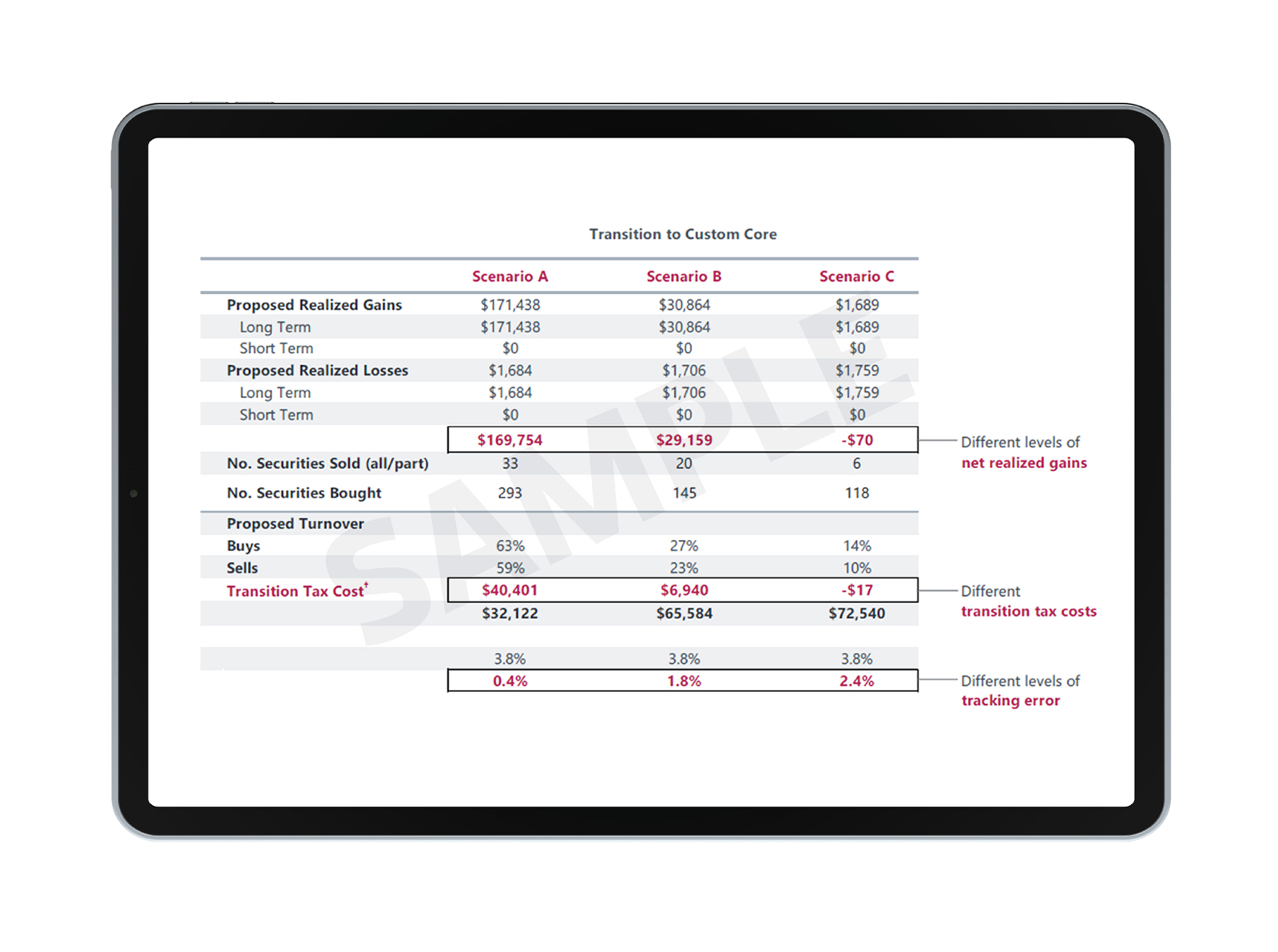
CHALLENGE
A client was unhappy with the performance of an active manager but leery of a transition that would trigger a large tax bill.
SOLUTION
Parametric ran a proprietary transition analysis that examined the tax and tracking error trade-offs of moving to a passive portfolio.
RESULTS
The client now holds a more diversified, tax-efficient portfolio with reduced risk relative to the target index.
Challenge
An advisor brought on a new client who held a separately managed account (SMA) with an underperforming US large-cap manager. Given the investor’s unhappiness with this manager’s lackluster returns, the advisor recommended a more passive and broad US large-cap index exposure. However, despite the underperformance, the market’s upward movement meant the SMA held a number of highly appreciated securities. Simply selling out of the client’s existing SMA would trigger the realization of a large capital gain and, with it, a large undesirable tax cost. Even though the client and the advisor had both lost confidence in the active manager, the primary hurdle preventing them from acting were the tax ramifications.
Parametric solution
Taxes often present a formidable hurdle for investors looking to transition from one portfolio to another. However, Parametric has designed a broad tool kit to help investors and their advisors balance the capital gains they’re willing to realize against an acceptable tracking error to the desired benchmark exposure.
Once the client and advisor selected their desired benchmark exposure, Parametric built a transition analysis to explore the tax implications of moving closer to the target exposure via a Parametric Custom Core® SMA.
This analysis provided a number of scenarios, ranging from a full transition (moving the portfolio into complete alignment with the benchmark, regardless of taxes) to one with high tracking error (but no realization of net gains). The client chose Scenario B, which may result in some realized taxable gains while achieving a moderate tracking error. The client also requested that dividends are reinvested and loss harvesting activity is applied in an effort to reduce tracking error over time.
Sample transition analysis

Results
The client no longer holds a concentrated, highly appreciated portfolio that reflected the views of an underperforming active manager. Instead the client holds a more diversified, tax-efficient portfolio with less risk relative to the target index. Over time, the deviation between the client’s portfolio and the target index will be whittled down by Parametric’s continuous management efforts, opportunistically using cash flows and loss-harvesting proceeds.
At Parametric, we manage more than $232 billion in assets in Custom Core accounts alone.* Focusing on tax management while maintaining adherence to the client’s desired benchmark is a critical component of our comprehensive approach.
*As of 3/31/2024. There is no assurance that the investment objective(s) will be achieved. All investments are subject to the risks, including the risk of loss.
